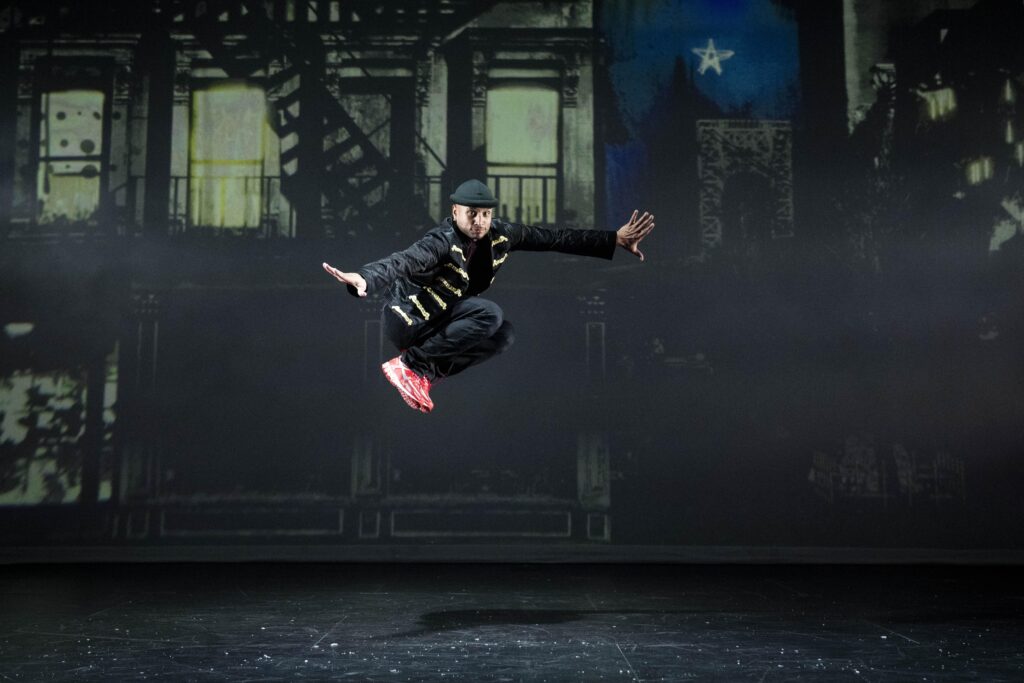
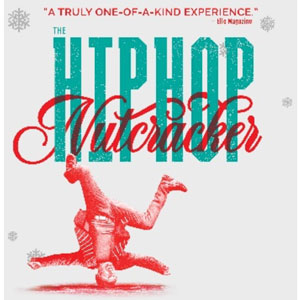 ***** Celebrating the 50th anniversary of hip hop music, “The Hip Hop Nutcracker” reimagines Tchaikovsky’s “The Nutcracker Suite” in a totally new way. Brilliantly directed and choreographed by Jennifer Weber, this innovative blend of hip hop songs, music, and dance with classical music and a touch of ballet forms a spirited and lighthearted production, sure to please those of all ages.
***** Celebrating the 50th anniversary of hip hop music, “The Hip Hop Nutcracker” reimagines Tchaikovsky’s “The Nutcracker Suite” in a totally new way. Brilliantly directed and choreographed by Jennifer Weber, this innovative blend of hip hop songs, music, and dance with classical music and a touch of ballet forms a spirited and lighthearted production, sure to please those of all ages.
Special guest master of ceremonies Kurtis Blow introduces the program. Sporting his fancily decorated white suit, Blow is one of hip hop’s founding fathers. He encourages the audience to sing and dance and participate in an interactive segment having to do with “Old School Hip Hop”, circa 1979. We are instructed to let all our troubles fade away. Later, at the end of the show, Blow creates additional excitement when we again sing and dance from our seats and while the performers take their bows.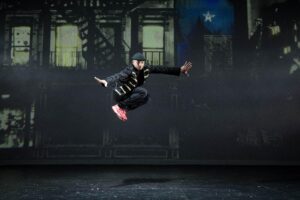
The high point, however, is the series of re-envisioned dance numbers, which showcase the vivacity, vitality, and vivaciousness of the super-talented artists! Weber has completely replaced Marius Petipa’s traditional choreography with hip hop movements, and Tchaikovsky’s fiercely recognizable music is now adorned with hip hop embellishments and riffs. Not only is Weber’s choreography outstanding, but she has worked hard with associate choreographer Randi “Rascal” Freitas and dance captain Ethan Evaro to get all of the dancers to move so wisely and well! While their collective movements are extreme and complicated, there is a lovely subtlety to all of the directing! The showstopper, however, is Marissa Licata on the solo violin; her splendid violin playing is remarkable, especially in the way that she concatenates romantic and modern classical music with hip hop. The mashup is incredible; it is unbelievable! Her talent cannot be surpassed! Above all, holding the entire show together with his original beats and remixes is DJ Boo, a gifted disk jockey who performs from stage left throughout.
Adapted by Mike Fitelson, the story of “The Nutcracker” is more or less true to the original written by Prussian author E.T.A. Hoffman and its previous adaptation by Alexandre Dumas père (which backs Tchaikovsky’s original ballet). The setting, however, is no longer in Moscow or, more generally, in Europe, but rather in America: more specifically, in the Harlem area of New York City, near the George Washington Bridge.
Halima Dodo stars as Maria-Clara. She is a superior dancer who wears long pink braids, which serve as a nod to her being a young girl as well as the story’s protagonist. The toy maker Drosselmeyer (Tumelo “Melo” Khupe), whose shop is in the neighborhood, shows up at a holiday party where Maria-Clara and her parents are bickering; and apparently, he has the magical talent to turn ordinary toys into sentient and spirited beings. Note that he wears a red-lined cape, as a symbol of his powers, but it also is a symbol of sensuality: that he has the power to bring out the full flower of Maria-Clara as in this coming-of-age story. The audience watches a toy nutcracker (Anthony “Omen” Cabrera) become a real human being (in the flesh) when he puts on his red Nikes—and by wearing those magic pair of shoes, the Nutcracker Prince is able to defeat the Mouse King (Seth “Reaktion” Hillard). Once the romantic attachment of Maria-Clara and the Nutcracker Prince is established, they travel backwards through time and space. The dream sequence takes them to a “place” called “Back in the Day”, which the playbill describes as the Land of Sweets nightclub on New Year’s Eve, 1984. In part, the point of this throwback is to feature the dance styles back then. When the pair visits the past, the two of them remain dressed in black, white, and gray while everybody else is dressed in colorful apparel. The highest accolades must go to costume designer Katy Freeman for all the fitting garments and how well they all coordinate with the various settings!
Speaking of settings, the superior projection design by Hana S. Kim could not be any better! We see various locales projected behind the dancers, featuring beautifully executed drawings of buildings and digital graffiti. But it is the graphical switch from black and white in the first act to full color in the second act that is extraordinarily well done! Modern Harlem is depicted in black and white, and later, in Maria-Clara’s dream sequence, colorful candy and candy canes make up the “Back in the Day” set. Like the movie “The Wizard of Oz” before it, the contrast between the use of black and white and the use of color could not be made any clearer.
Other notable dancers include Jesse Smith as Mom and G’Bari “GQ” Gilliam as Dad, the two of whom make a great pair! Then there is Trent Jeray, who plays a part known as Flute, another highlight of the show. Other performers include Esita “Flyya” Calhoun, Athena Cruz, Michael Delgado, Baptista Kawa, and Zuce Morales. Swings are Janae Valentine and Ethan Evaro.
My only issue with the presentation has to do with the lighting. From my location on the main floor, the lights were too often directly in my face and too intense. The little boy sitting in the row ahead of me kept wanting to hide behind his mother whenever the bright lights hit his eyes. I found myself closing my eyes too many times to avoid the brightness, especially near the end. This is one of the few productions where the preferable seats are in the balcony, not just because of the lighting issue but also because, from that vantage point, you can have a clearer view of the stage floor and can better appreciate when the dancers spin on their heads. Seeing the full effect of their activity is priceless. While the sound was very good, I also wore earplugs.
The admixture of hip hop and classical is sheer genius; plus all the dynamism is superb. I personally know just how tough it is to do hip hop dancing: Having taken one class in it myself—and no, I never spun on my head—I can attest to how difficult this style of dance is: even the easy moves. The impact on your joints (such as knees and ankles) is tremendous. It is hard to hit the ground with full force and to use a hard floor to bounce from one dance position to another. Just like spinning a vinyl record backwards adds a pleasurable jerkiness to the dance moves on stage, the show has its stops and starts. But that only adds to its flavor! You’ll really enjoy seeing this 2-hour-and-10-minute performance (with one intermission). It is perfect for the holiday! You’ll just have to experience the production for yourself before it leaves Chicago!
“The Hip Hop Nutcracker” is playing at the Cadillac Palace Theatre, 151 W. Randolph Street, in Chicago through December 17, 2023.
Tickets range from $30 to $238, depending on date, time, and seat location.
Performance schedule:
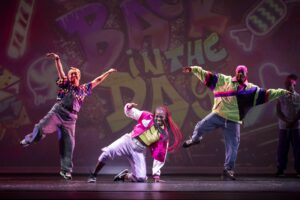 Tuesday, Thursday, Friday – 7:30 p.m.
Tuesday, Thursday, Friday – 7:30 p.m.
Wednesday – 2:00 and 7:30 p.m.
Saturday – 2:00 and 8:00 p.m.
Sunday – 2:00 p.m.
For more information and to purchase tickets, go to: https://www.broadwayinchicago.com/shows/the-hip-hop-nutcracker/.
Parking is available at 177 N. Wells St. Chicago. See: https://www.iparkit.com/event/broadwayinchicagotheaters?utm_source=BIC&utm_medium=link&utm_campaign=BIC.
For general information about the show, including locations of other performances and tour dates in 2023, please visit: https://www.hiphopnutcracker.com/.
To see what others are saying, visit www.theatreinchicago.com, go to Review Round-Up and click at “The Hip Hop Nutcracker”


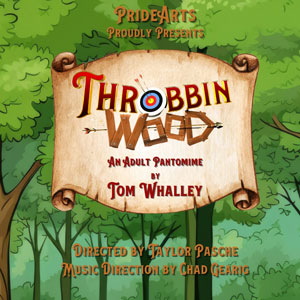
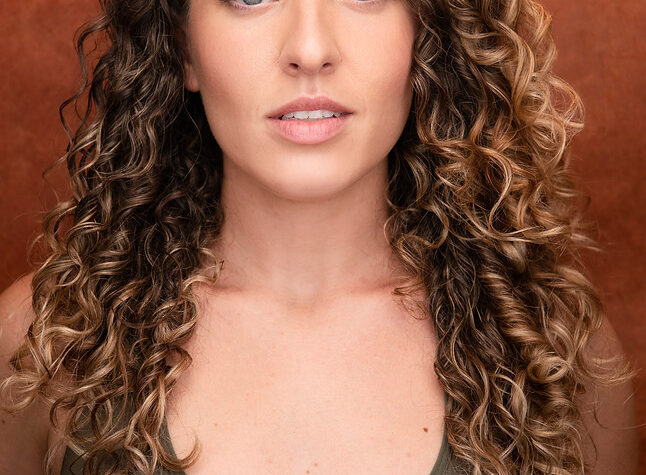


More Stories
“Throbbin Wood” reviewed by Julia W. Rath
“Royko: The Toughest Man In Chicago” revisited review by Julia W. Rath
“Falsettos”